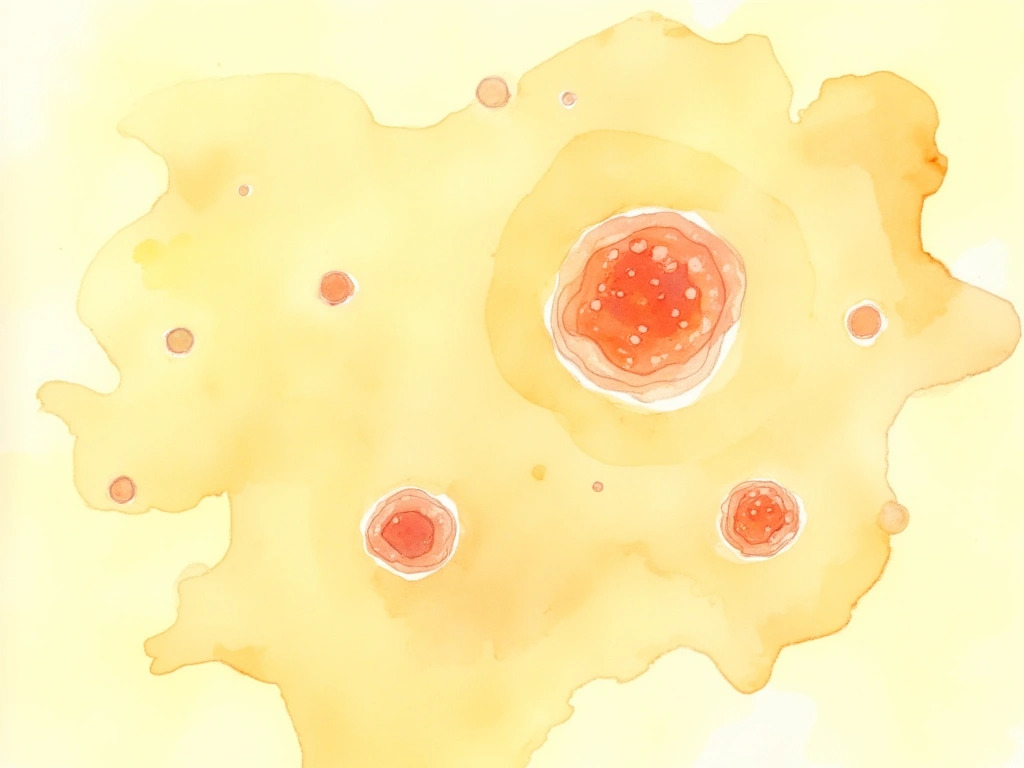- Dandruff is often linked to a yeast called Malassezia and scalp inflammation [1].
- Medicated shampoos use specific ingredients to fight this yeast and calm the scalp.
- Research shows these shampoos can be effective, especially with regular use.
TLDR: Research indicates anti-dandruff medicated shampoos effectively treat dandruff by targeting specific yeast and inflammation, with key ingredients like Zinc Pyrithione and Ketoconazole showing proven results in studies.

What Causes Dandruff?
Dandruff is a common scalp issue causing white or yellowish flakes and often, itching. While the exact cause can vary, research frequently points to two main factors: a naturally occurring yeast called Malassezia furfur and the scalp’s inflammatory response to it [1].
Interestingly, dandruff is considered a milder version of a condition called seborrheic dermatitis. Seborrheic dermatitis can cause similar flaky, inflamed skin not just on the scalp, but also on the face, chest, and back [1]. Both conditions seem to involve Malassezia yeast and inflammation, which is why treatments often overlap [2]. Understanding this connection helps explain why some anti-dandruff treatments can also benefit related skin issues.

How Medicated Shampoos Combat Dandruff
Medicated anti-dandruff shampoos work by directly addressing the likely causes of dandruff. They contain active ingredients designed to control the Malassezia yeast population on the scalp and reduce inflammation [2].
Two of the most well-studied and commonly used active ingredients are:
- Zinc Pyrithione (ZPT): This ingredient has antifungal properties.
- Ketoconazole: This is another potent antifungal agent.
Studies show that shampoos containing these ingredients can significantly reduce dandruff symptoms like flaking and itching over time, particularly when used regularly as directed [3, 5].

Key Ingredients: A Closer Look at the Evidence
Clinical research provides strong evidence for the effectiveness of ingredients like Zinc Pyrithione and Ketoconazole.
Zinc Pyrithione (ZPT): A 1985 study tested a 1% ZPT shampoo. It found that dandruff progressively decreased as the frequency of washing increased (from 1 wash up to 9 washes over the study period). Significant improvements compared to a non-medicated placebo shampoo were seen after 3, 6, and 9 washes. The study also noted a decrease in yeast microorganisms on the scalp [3]. More recent research from 2012 suggested that ZPT shampoo can help normalize scalp gene expression related to inflammation in people with dandruff, improving overall scalp health [4].
Ketoconazole: A 1993 trial compared 2% Ketoconazole shampoo to 2.5% Selenium Sulfide shampoo (another anti-dandruff ingredient) and a placebo. The results showed Ketoconazole was significantly more effective than Selenium Sulfide after just 8 days of treatment (p=0.0026). It was also better tolerated, with no adverse side effects reported for Ketoconazole compared to nine reported instances with Selenium Sulfide [5]. This study highlighted Ketoconazole’s effectiveness against the yeast involved (Pityrosporum ovale, now often referred to as Malassezia).

Comparing Common Active Ingredients
Based on clinical trial data, here’s a simplified comparison of common anti-dandruff ingredients:
| Ingredient | Concentration Studied | Effectiveness Notes | Safety & Tolerance Notes |
|---|---|---|---|
| Zinc Pyrithione (ZPT) | 1% | Reduces dandruff significantly with regular use (3+ washes) [3], targets yeast. Improves scalp condition markers [4]. | Generally well-tolerated [3]. |
| Ketoconazole | 2% | More effective than Selenium Sulfide at Day 8 [5], targets yeast effectively. | Very well tolerated; no adverse effects reported in one major trial [5]. |
| Selenium Sulfide | 2.5% | Effective, but less so than Ketoconazole in direct comparison [5]. | Less tolerated than Ketoconazole; some adverse events reported [5]. |
This comparison, drawing from studies like Shuster et al. (1985) [3] and Piérard et al. (1993) [5], highlights the strong scientific backing for ZPT and Ketoconazole in treating dandruff effectively and safely.

Effectiveness and Safety in Practice
Clinical studies consistently demonstrate that medicated shampoos containing ZPT and Ketoconazole effectively reduce dandruff symptoms like scaling and itching.
The 1985 ZPT study showed that frequency matters – more washes led to better results [3]. For chronic conditions like dandruff, patient comfort and willingness to use the product are crucial. Ketoconazole’s superior tolerance compared to Selenium Sulfide, as shown in the 1993 study, makes it a favorable option for long-term management [5].
Overall safety profiles for these ingredients are generally good. A more recent 2023 study focusing on a gentle anti-dandruff formulation also confirmed effectiveness in reducing dandruff signs over 21 days, supporting the safety of such products for mild-to-moderate cases [6].

Insights from Non-Academic Sources
While this summary prioritizes peer-reviewed research, general health websites also discuss medicated shampoos. For example, Healthgrades notes that these shampoos contain active drug ingredients for various skin conditions and that ZPT is available over-the-counter [7]. However, such sources often lack the detailed evidence and rigorous analysis found in clinical trials, reinforcing the importance of relying on academic studies for understanding efficacy and safety.

Conclusion and Key Takeaways
Based on a review of scientific literature, anti-dandruff medicated shampoos containing active ingredients like Zinc Pyrithione and Ketoconazole are effective treatments for dandruff. They work by targeting the Malassezia yeast and scalp inflammation often associated with the condition. Clinical trials provide robust evidence supporting their use, highlighting both their effectiveness in reducing symptoms and their generally favorable safety profiles. The link between dandruff and seborrheic dermatitis further supports the use of these targeted treatments for broader scalp health.
- Targeted Action: Medicated shampoos address key dandruff causes: Malassezia yeast and inflammation [1].
- Proven Ingredients: Zinc Pyrithione (ZPT) and Ketoconazole are well-researched, effective ingredients [3, 5].
- Clinical Evidence: Studies show significant reduction in flaking and itching with regular use [3, 5, 6].
- Safety and Tolerance: Key ingredients like Ketoconazole and ZPT are generally well-tolerated, supporting consistent use [5].
- Seborrheic Dermatitis Link: Understanding the connection helps explain treatment overlaps, especially for facial or hairline flaking [1].


No Comments
Be the first to start a conversation